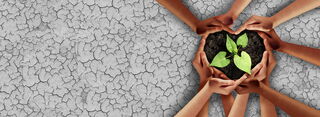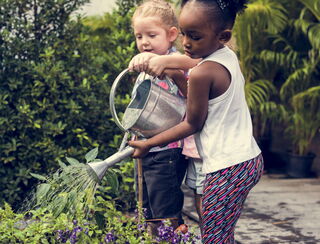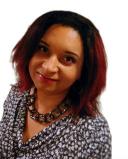Relationships
Social Capital and Coping: Friendships Make the Difference
Cross-class relationships can help pull people out of poverty.
Posted August 31, 2022 Reviewed by Davia Sills
Key points
- Community power can be described in terms of social capital, which can be used to heal and rebuild after a crisis.
- Family wealth rather than ability increasingly determines a person’s financial future.
- Places where cross-class relationships grow greatly improve the economic prospects of children living in poverty.
- Therapists should consider social capital to provide effective and lasting support to clients.

This post was co-authored by Sonya Faber, Ph.D., MBA, and Monnica Williams, Ph.D.
Social capital in a community
Healthy communities are essential building blocks of an equitable and just society, and the key components of community power can be described in terms of social capital. Social capital can be defined as “networks together with shared norms, values, and understandings that facilitate cooperation within or among groups” (OECD, 2001). Social capital is beneficial and arguably essential for neighborhoods and communities. Social capital is being increasingly recognized for its central role in nurturing communities by providing a lifeline to crucial resources—everything from banking to food access to health care, green spaces, and psychological support (Aldrich & Meyer, 2015).
There are three types of social capital often discussed:
- Bonding social capital — experienced between friends or family and among individuals who are emotionally close, resulting in tight bonds to a specific group
- Bridging social capital — experienced between people loosely connected across social groups, such as class or race
- Linking social capital — experienced between regular citizens and those in power
The terror connection
On May 14, 2022, a young White man armed with an AK-47 and the “great replacement” theory gunned down 10 elderly Black women in a supermarket in East Buffalo, New York. This young man entered this specific community not only because it had been historically racially segregated but because it continues to be so. By 1991, the metropolitan Buffalo area was determined to be the fourth most segregated region in the United States (Closson, 2022). This segregation is by design, with a devastating effect on the social capital needed to pull residents out of poverty. In an effort to cement the separation of its Black and White citizens, the White post-WWII city planners bulldozed a Black neighborhood to create the Kensington Expressway, dismantling a tree-lined public space considered to be one of the city’s greatest cultural assets in the process. East Buffalo is a living example of structural racism and the generational and malicious dismantling of the social capital of a community.
Shootings like these also have devastating effects on a community already in crisis. In the aftermath of this horrific event, the Black residents of East Buffalo experienced their only—and now closed—supermarket, which doubled as a community center and a social gathering place, as a further loss of social capital. Residents said that the shooting dealt not only a deep emotional blow but also a social and economical one, explaining that the store where the shooting occurred was the heart of the community, and if it does not reopen, it will kill the economy of the area.
After a catastrophic attack such as this, individual mental health services are inadequate to deal with the scope and scale of the trauma faced. More must be done to support the individuals affected and help rebuild the social capital of a community already marginalized and abused. Encouraging the use of bonding social capital (i.e., accessing support through family, relatives, and community members) can better assist individuals and households in responding and rebuilding by promoting adaptive and collective coping mechanisms (Mpanje et al., 2022). Coping for the residents of the traumatized community and those who would support them requires a deeper understanding and analysis of their social capital.
Friendships make the difference.
Upward mobility in the USA has always been a bittersweet experience for racialized people groups. The last 40 years have seen an alarming decrease in class mobility, with family wealth rather than ability increasingly determining a person’s financial future. Further, there has not been solid data to definitively determine how and why those born into poverty, counter to trends, become upwardly mobile.
A new study released in the journal Nature, based on billions of social media connections, has unearthed a compelling exception to prevailing trends that helps explain why location is so important in the USA in providing a path out of poverty (Chetty et al., 2022). The study found that friendships make a difference. Children born into poverty in geographic locations where they can have friendships that reach across class boundaries earn significantly more in adulthood than those who do not. The study looked at the friendships of 72 million individuals, an astounding 84 percent of all U.S. adults between the ages of 25 and 44.

The study confirms what many have experienced, the enduring life-changing value of a friend. Friendships between classes were demonstrated to have a more powerful impact than job availability, family structure, school rating, or even the racial makeup of a community. Knowing someone intimately enough to be able to call them a friend opens up opportunities in opposition to the longstanding racial and ever-growing class divides in the United States that shut off friendships.
The maps are very telling, demonstrating that in a large swath of the antebellum U.S. South, there are locations in which the fewest friendships are made across class divides. Cities, in contrast, both in the South and throughout the nation, are islands of exceptions in a sea of disadvantages. These large swaths of the South are virtual deserts of the type of social capital called bridging capital, informal ties that connect us with people who are unlike us. The lack of cross-class friendships, a type of bridging capital, clearly reveals this.
Interestingly, this research shows that even in locations that are lacking in all other kinds of social capital, if cross-class relationships can grow as a sprout in the pavement, the germination of these relationships is enough to lift the economic prospects of children living in poverty. Unfortunately, this type of social capital has decreased, and since the ’70s, America has become more segregated by class without necessarily becoming more racially integrated. The class divide means that individuals are more and more likely to live in communities and enroll in schools with people who have the same economic and financial status.
This behavior, which is destroying the fabric of America, is tellingly driven by fear—anxieties about entitlement, losing status, and falling to the bottom rungs of the power and status ladder. These fears feed power-hoarding behaviors that polarize communities. And most concerning, because fear is the prerequisite to violence, these behaviors are dangerous.
Rebuilding for social healing
When an entire community finds itself in crisis, such as the one that happened in East Buffalo, strong ties with neighbors, knowing the name of the local community leader or pastor, and having experience working together with local outreach groups are important to creating positive change. Community institutions often provide essential support in marginalized or economically disadvantaged areas. The rebuilding of social capital in this framework, rather than being a means to an economic outcome, becomes a form of healing.
This is why marginalized and racialized communities have a greater need to understand the benefits and types of social capital and learn how to increase each type. In other words, reducing discriminatory community disparities requires a deeper understanding and targeted development of all three types of social capital. Bonding social capital, a network of cousins and aunties, is critical to everyday survival. Linking social capital, however, provides the connection between the community and the government to affect zoning, decrease redlining, and provide parks and public transportation. While bridging capital in the form of cross-class friendships turns out to be the mightiest form of social capital, able to lift individuals out of poverty in every corner of the nation where it can be found (Gilbert et al., 2022).
Social capital in clinical practice
For clinicians working with marginalized clients, it is essential to consider social capital and its influence in order to provide effective and lasting support to clients. As discussed, social capital, directly and indirectly, influences individuals’ access to essential resources, employment, social support, and coping strategies. Some coping strategies, although effective for individuals most of the time, may not be as accessible or as effective for marginalized clients. A better understanding and consideration of social capital may help guide clinicians to advance strategies that are accessible or promote social capital growth, even when these strategies might not seem to be the most obvious option.
References
Aldrich, D. P., & Meyer M.A. (2015). Social capital and community resilience. American Behavioral Scientist, 59(2), 254–269. https://doi.org/10.1177/0002764214550299
Chetty, R., Jackson, M.O., Kuchler, T. et al. (2022). Social capital I: Measurement and associations with economic mobility. Nature, 608, 108–121. https://doi.org/10.1038/s41586-022-04996-4
Gilbert, K. L., Ransome, Y., Dean, L. T., DeCaille, J., & Kawachi, I. (2022). Social capital, Black social mobility, and health disparities. Annual Review of Public Health, 43, 173–191. https://doi.org/10.1146/annurev-publhealth-052020-112623
Mpanje, D., Gibbons, P., McDermott, R., Ochieng Omia, D., & Owuor Olungah, C. (2022). Social capital undergirds coping strategies: Evidence from two informal settlements in Nairobi. Journal of International Humanitarian Action, 7(1), 1-16. https://doi.org/10.1186/s41018-022-00115-0




